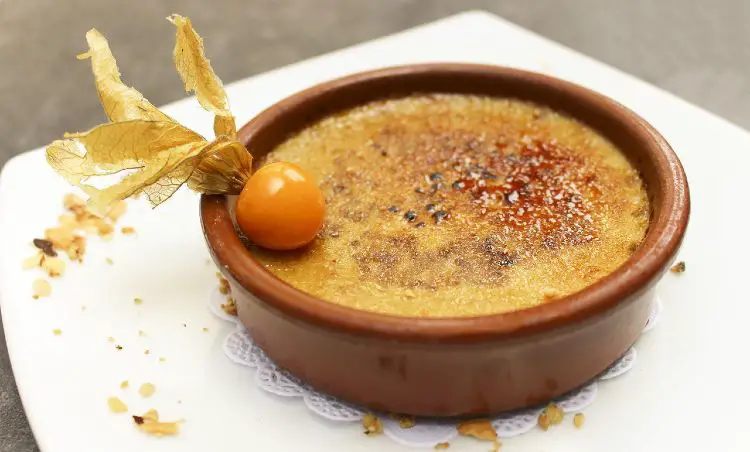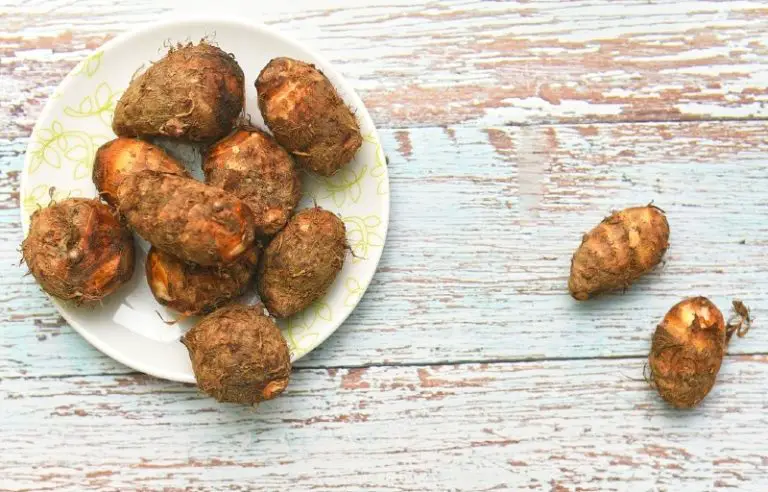The Bell at Skenfrith and Its Kitchen Garden
A group of young Saddleback pigs are feasting vigorously on beetroot leaves, raw potatoes and carrot peelings. “Oh they will absolutely eat everything!” says John Tinklin, who along with his partner Michele Civil looks after the organic kitchen garden of The Bell at Skenfrith, on the border between England and Wales. “When I go about the garden in the early morning, I have to make sure they don’t see me, because if they do they just start squealing like mad, waking up all the guests in the hotel” explains John.
He tells me that at six months old they will be taken to the butcher, Brian George in Brecon, and by then they will be plump and broad across the midriff and hind quarters. All of the meat will be used by the Head Chef, Rupert Taylor, in the restaurant.
The owners of The Bell, Janet and William Hutchings, want to increase the size of the herd, and eventually an entire 10 acre pen will be fenced off for them amidst an old orchard. Gardener John explains how these pigs destroy everything in their path, and I can see they have used their snouts like rotavating machines, to forage out all the greenery and roots of what was once a wild, bramble filled green patch. Now they are covered in red, wet mud and are grunting with happiness and greed, looking up at us to see if we are carrying any more food.
We walk out to the rest of the kitchen garden. I remember coming to stay at The Bell about five or six years ago, and there was just a little flower garden adjoined to the outside terrace of the hotel. Now there is a huge field, nearly 5 hectares big, and most of it has been planted as a kitchen garden with raised wooden beds.
The soil here is dark, rich clay and John tells me that, because they are certified organic by the Quality Welsh Food Certification system, they can only put well rotted cow manure on the beds. They are also experimenting with digging in a new non-invasive comfrey plant whose leaves will add nutrients to the soil once decomposed.
In the early June sun I can see most of the restaurant Menu growing in neat and tidy rows in front of me. There are arching metal frames that lead the eye along a central axis and through the garden: so much attention to detail and thought has gone into creating not only a very functional, fertile and productive space, but one where the eye can also feast on beauty and softness. Imagine coming out here in the early evening, once the sun has set, champagne glass in hand, butterflies resting on the honeysuckle, and the pineapple mint loading the air with its heady fragrance.
John explains that there is no way they are able to grow everything the restaurant kitchen needs, but, sometimes, at the peak of the season, when there is a glut, they are in a position to sell their surplus harvest on to their own suppliers, who in turn sell them fruit and vegetables in the colder months.
All over the kitchen garden John and Michele have planted companion plants: Californian poppies, limnanthes douglasii (the poached egg plant), chamomile, marigolds and sweet peas. John explains that practically any flowering plant is a good companion plant, as the fragrance and pollen attracts hover flies and ladybirds that eat aphids.
A small, shallow pond has been dug and filled with water in one section of the garden. There are pond plants lined up around its perimeter and floating in its centre, and it is now a thriving habitat for frogs, newts and toads. A giant dragonfly buzzes round us, landing with helicopter precision on a nearby wildflower meadow.
“The winters here can be bitterly cold” says John “We can’t risk anything, so we bubble wrap sections of the poly-tunnels, and we fleece the most tender plants.”
We walk into one of the smaller greenhouses and inside there are 16 different varieties of heritage tomatoes and rows and rows of chilli plants in plastic pots. John tells me that they grow a particular variety called a Naga chilli, which is meant to be the hottest in the world. There are also some germinating trays sitting on warm pads, heated by an electric heater.
The whole garden is irrigated with water from a natural spring. It is pumped into a large water tank, and then gravity fed throughout the garden, in sprinklers and through pipes.
John reads all the gardening books and magazines he can get hold of, and one of his very favourite writers is Bob Flowerdew, because of his work in sustainable horticulture.
All the fruit bushes are netted. “If it’s red, the birds will have it!” he exclaims, pointing at the red currant bushes. I also spy terracotta strawberry pots, strawberry tendrils, flowers and fruits spilling their way out of every hole. They are next to be picked, for pudding and breakfast.
Set in what was once a 16th Century coaching inn, The Bell at Skenfrith is a very well known stopping point for the millions of visitors who cross England into Wales every year. Neither staunchly Welsh nor English, it is a quiet no-man’s land, where everything stops for tea at four o’clock.
The village of Skenfrith is one of the prettiest you will ever see, straddling the river Monnow with its ancient 13th Century castle ruins dominating a landscape of gently rolling hills, wildflowers, stone houses, beautiful gardens and a village church.
I joke with John that it seems to me the villagers here compete with one another as to who has the most beautiful garden, probably leaning over the stone wall to spy on whether the neighbours’ lupins are taller or shorter.
Once through the doors of The Bell I am not surprised to see the proliferation of awards hanging on the walls: from Les Routiers, Conde Nast Johansens, the AA and the Welsh Tourist Board, there are very few gongs they have not won.
The pace, the style and the ambiance of this Welsh foodie institution are all very gentle, informal and relaxed, like going to stay with a friend who has a lovely farmhouse. There are flagstone floors, muted colours, flowery sofas, magazines piled on coffee tables, vases of garden flowers everywhere, wicker baskets filled with kindling, open fireplaces and rural, vintage kitchenalia and garden accessories dotted here and there.
Small children play outside on the terrace. Walkers and ramblers come in for a drink and an ice-cream. This is where the locals come for their high days, holidays and get-togethers, from weddings, to birthdays and anniversaries. A decade on and the Hutchings are still doing exactly what they have been doing all along: consistent, understated, relaxed excellence.
With just eleven rooms in the building, the atmosphere is always going to be personal and familiar. Even the reception lobby is used as a boot room, wellies: walking boots, ordnance survey maps and walking sticks lining one side of the wall and window sill.
To pay homage to the fecundity of the gardens, I ordered a creamed garden beetroot soup with whipped goat’s cheese and candied orange strips. This is served hot, in a jug, and poured into your plate with a small floating island of crème fraiche at its centre. The candied orange crisps work particularly well as a foil to the rich, creaminess of the soup.
The other starters featured seasonal favourites: asparagus, young rabbit, scallops and vichyssoise. Inside the front cover is a long list of the restaurant’s suppliers, quite literally cataloguing every single ingredient, most of which come from a half hour down the road.
The pressed garden vegetables with chickpea bagna cauda, aubergine caviar, spring vegetables and micro cress is a deserving ode to the hard work and long hours put into the garden by John and Michele. The purees and layers are very soft, whilst the asparagus and carrots are still al dente. The whole dish is drizzled with a fresh, zesty salsa verde style dressing.
The emphasis of the rest of the menu is on Welsh lamb, pork and beef from Brecon, and fish and seafood from Dartmouth.
The pudding is extremely well done, with a baked almond cream that wobbles like a semifreddo, almond biscotti, a roasted almond puree and cherry ice cream. The plate is decorated with borage flowers, chocolate mint and toasted almonds.
It is refreshing that despite working for Heston Blumenthal and Jamie Oliver, as well as in the brigade of Gary Jones (who is now Executive Head Chef at Le Manoir) the Chef at the helm of The Bell’s kitchen, Rupert Taylor, is cooking simple, fresh, well seasoned and decorative dishes that do justice to the ingredients that underpin them. No foam, jus, balsamic reduction, gold leaf or deconstructed molecular gastronomy here, thank-goodnes.
The wine list is particularly well thought out and researched, and has won the restaurant several awards. You will see dotted around the inn several fine wine magazines, as William Hutchings is a keen wine connoisseur.
You can sit outside on the terrace, drinking your tea or coffee, watching the swallows carving the air in flight round the back of the building. You can hear the cooks in the back kitchen shouting out orders if you listen carefully. Or the turning of John’s wheelbarrow, as he makes his way, secateurs in hand, round this picture perfect plot, making sure the pigs don’t see him.
Contact Details
The Bell at Skenfrith www.skenfrith.co.uk and www.skenfrith.com

